Expert Review
Kia Niro SUV (2019 - 2022) review
Read about the facelifted version of the Kia Niro, a mid-size SUV available as a hybrid, plug-in hybrid or full electric vehicle.
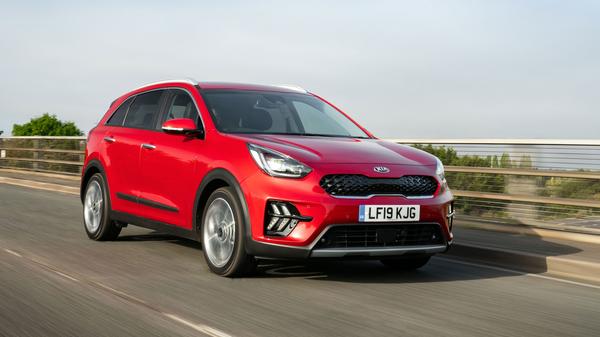

Words by: Auto Trader

Additional words by: Phill Tromans
Published on 11 November 2019 | 0 min read
The Auto Trader expert verdict:
4
The Kia Niro is an entirely-electrified SUV that comes as either a hybrid, plug-in hybrid or fully electric vehicle. As well as the green credentials that this brings, it also means considerable fuel and tax savings over non-electrified rivals. It's decent to drive, well made and has a stonking seven-year warranty, as well as being loaded with equipment as standard. The electric e-Niro is particularly impressive, but all Niros are well worth checking out.
Reasons to buy:
- Choice of electrified power systems
- Massive seven-year warranty
- Good value for money
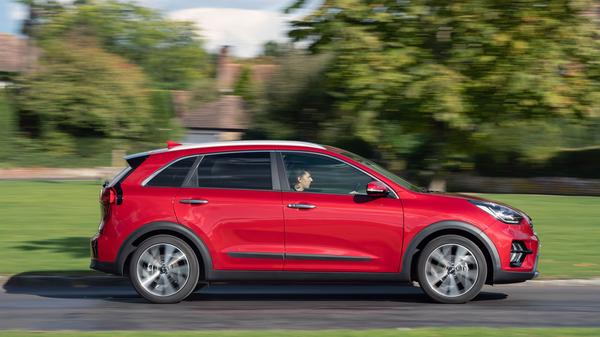
Running costs for a Kia Niro
Your running costs will vary depending on which version of the Kia Niro you buy. With a hybrid, plug-in hybrid and full electric version available, there are also no shortage of different rivals too. The hybrid version comes in slightly cheaper than the equivalent Toyota C-HR, although it has more power and will likely cost virtually the same to run over several years.
The plug-in hybrid Niro lines up against cars such as the Mitsubishi Outlander PHEV, which is more expensive to buy and, according to official estimates, won’t give you such good mileage for your electricity spend. Overall, we’d expect the Kia to be cheaper to run.
The electric e-Niro has few direct rivals, although you could make the case for electric cars as varied as the Nissan Leaf, Tesla Model 3 and BMW i3 being cars that potential customers could also consider. The i3 will cost you about the same to buy and run as the Kia, but while you get a premium badge and funky design with it, you also get far less space. Tesla’s Model 3 costs more to buy, but has very strong resale values which make it very attractive financially.
Expert rating: 4/5
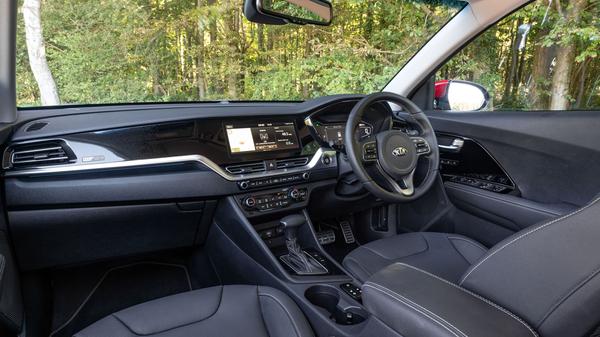
Reliability of a Kia Niro
Like all Kias, the Niro comes with a superb seven-year/100,000-mile warranty – the best on any hybrid available in Britain – and is also available with Kia’s Care 3 and Care 3 Plus servicing packages, which offer retail customers fixed-cost servicing for three- or five years. All these packages are fully transferable if the car is sold. Kia as a brand features near the top of the JD Power 2019 Vehicle Dependability Study, although there are a few rival manufacturers ahead of it. Still, it all bodes very well for the health of your new Kia.
Expert rating: 4/5
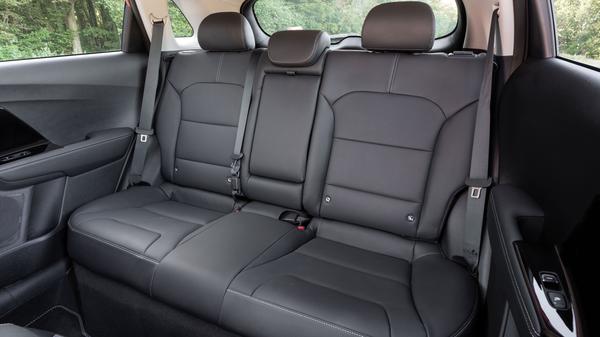
Safety for a Kia Niro
Every version of the Kia Niro comes with plenty of safety systems, including an automatic emergency braking system that can detect pedestrians and cyclists as well as vehicles. You’ll also get a lane keep assist system and driver attention warning, which alerts you if you’re not concentrating. Adaptive cruise control is included too, as are seven airbags and two Isofix child seat mounting points in the outer rear seats.
Expert rating: 4/5
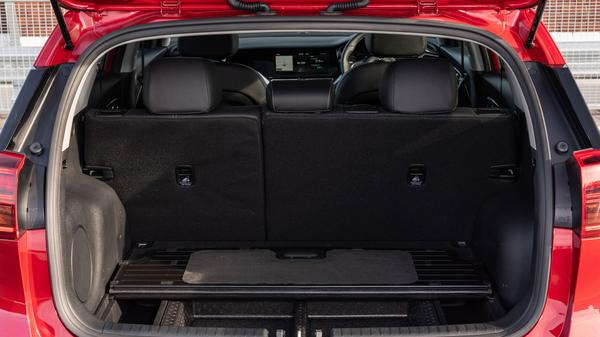
How comfortable is the Kia Niro
The Kia Niro’s interior is unremarkable, design-wise, but it’s inoffensive, the materials used feel of a decent quality and it’s all screwed together well. The infotainment system isn’t the flashiest on the market, but it’s easy to navigate around via the touchscreen and has all the features you’re likely to want, including Apple CarPlay and Android Auto. Screen size varies between 8.0-inches and 10.25-inches, depending on which version and trim you go for.
There’s plenty of room in the back for tall adults. Boot size varies between hybrid, plug-in hybrid and electric models thanks to the need to house the batteries. The e-Niro has the most space, followed by the hybrid, and the PHEV sports the smallest boot. But in all models the floor is flat with hardly any lip to lug stuff over, and the rear seats fold down virtually flat. The boot might not be the largest, but you can use the space well. There are a good number of cupholders, storage spaces and pockets throughout the car.
On the move, the Niro ticks comfort boxes without too much trouble. The ride can get a bit jiggly at lower speeds but handling is decent, with body roll kept nicely in check. The steering can feel a bit vague but has a nice heft to it. Overall, it’s an easy and pleasant car to drive.
The e-Niro is considerably heavier than the other cars in the range and has beefed up suspension to cope. This means the ride is a bit firmer and can feel unsettled on less-than-perfect road surfaces, but it hides its bulk through the corners very well. With the battery mounted in the floor, the centre of gravity is very low which restricts body roll. Light steering makes for easy manoeuvring around town.
Expert rating: 4/5
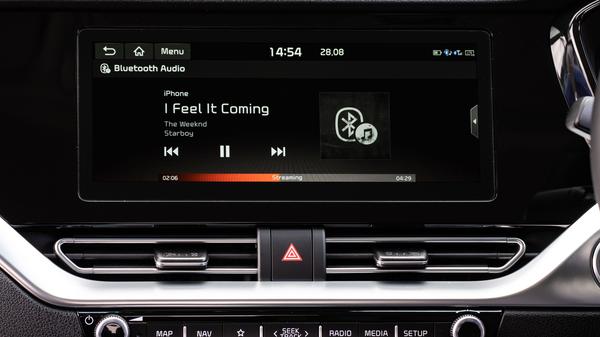
Features of the Kia Niro
With its 2019 facelift the revised Niro gets a few visual tweaks over its original version. There are different bumpers and a revise grille, as well as redesigned headlights and rear lights. But what hasn’t changed is the impressive range of equipment you get as standard, whatever version you go for. Options are largely limited to paint colours, and even a towing pack is included as standard across the range, with the exception of the e-Niro.
There’s a choice of three trims on the hybrid Niro, but only one on the plug-in hybrid. The e-Niro has proved so popular that the initial batch has sold out, and at the time of writing, the spec of the next version hadn’t been confirmed, but we’d expect a single trim as with the plug-in hybrid.
The Niro’s trim levels are numbered, although the old entry-level 1 model has been discontinued, which means the most affordable Niro is the 2. This gives you 16-inch alloy wheels and half-leather upholstery inside, as well as an 8.0-inch screen for the infotainment, but without sat-nav. You do get a reversing camera and rear parking sensors though.
Upgrade to the 3 model and you’ll get 18-inch wheels and LED front fog lights, as well a black leather upholstery inside. The driver gets an electrically adjustable seat, and both front seats are heated, as is the steering wheel. This can be exceedingly pleasant on cold mornings. In addition, the touchscreen grows to 10.25-inches, and comes with sat-nav. Oh, you’ll get front parking sensors too. The plug-in hybrid Niro is only available in 3 trim.
The top-spec trim is the 4, which features an opening sunroof and bright LED headlights, heated rear seats and ventilated front seats to keep you cool in hot weather.
Expert rating: 5/5
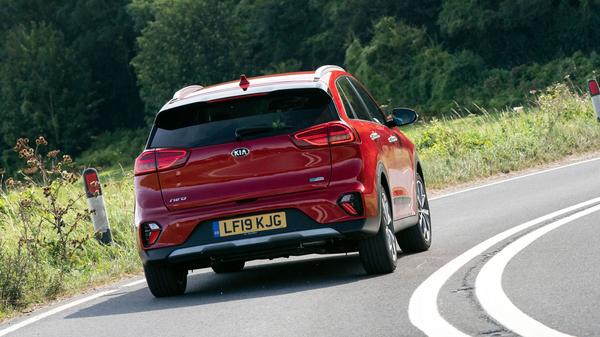
Power for a Kia Niro
The Kia Niro hybrid comes with a 1.6-litre petrol engine hooked up to a battery and electric motor, which combined give you 141 horsepower. At low speeds it runs on almost-silent electric-only mode (if the battery has sufficient charge), but when the petrol engine kicks in it can initially be rather noisy. But after that, unless you’re really urging it on, the noise dies down to acceptable levels, and it and has just enough grunt to make for unhurried progress.
We’ve yet to try the plug-in hybrid model, which also has 141 horsepower and can be plugged into the main to charge fully in 2hrs 15mins using a 3.3kW AC charger.
The e-Niro is the most powerful model in the range with a full electric motor producing 204 horsepower. It’s got an impressive range of 282 miles per charge. As it’s an electric car, there aren’t any perceptible gear changes, so acceleration is very smooth and immediate. Pop it into ‘Sport’ mode and the acceleration is even more immediate. However, it’s not as quiet as you might expect because there’s quite a bit of road noise at motorway speeds.
You can change the amount of regenerative braking the e-Niro applies to top up the car’s range, with four different settings accessed through the paddles behind the steering wheel. At its highest setting, you can basically drive the car with one pedal.
Charging times will vary depending on the type of charger you use. If you’re using a fast 100kW charge point, it will take 54 minutes to go from 0-80% charge. With a standard 7.2kW home charger, it’ll take just short of ten hours. On a three-pin plug, you’re looking at 29 hours.
All Niro models are front-wheel drive only.
Expert rating: 3/5